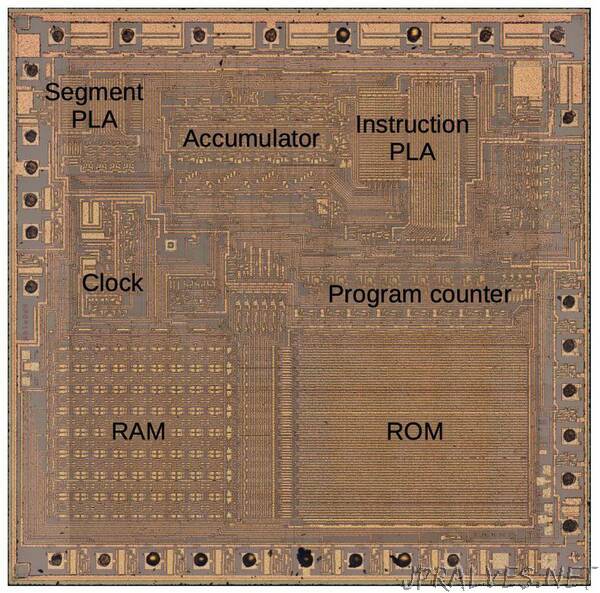
“Texas Instruments introduced the first commercial single-chip computer in 1974, combining the CPU, RAM, ROM, and I/O into one chip. This family of 4-bit processors was called the TMS1000.1 A 4-bit processor now seems very limited, but it was a good match for calculators, where each decimal digit fit into four bits. This microcontroller was also used in hand-held games2 and simple control applications such as microwave ovens.3 Since its software was in ROM, the TMS1000 needed to be custom-manufactured for each application, but it was inexpensive and sold for $2-$4 in quantity. It became very popular and was said to be the best-selling “computer on a chip”.
The die photo above shows the main functional blocks of the TMS1000. One thing that distinguishes the TMS1000 (and most microcontrollers) from regular processors is the “Harvard architecture”, where code and data are stored and accessed separately. In the TMS1000, code and data even have different sizes: instructions were 8 bits and stored in a 1-kilobyte ROM, while data was 4 bits and stored in a 64×4 (256-bit) RAM.4 Since the space for RAM was limited, Texas Instruments developed new circuits for RAM. In this blog post, I look at how the TMS1000 and later TI chips implemented their on-chip RAM.”
